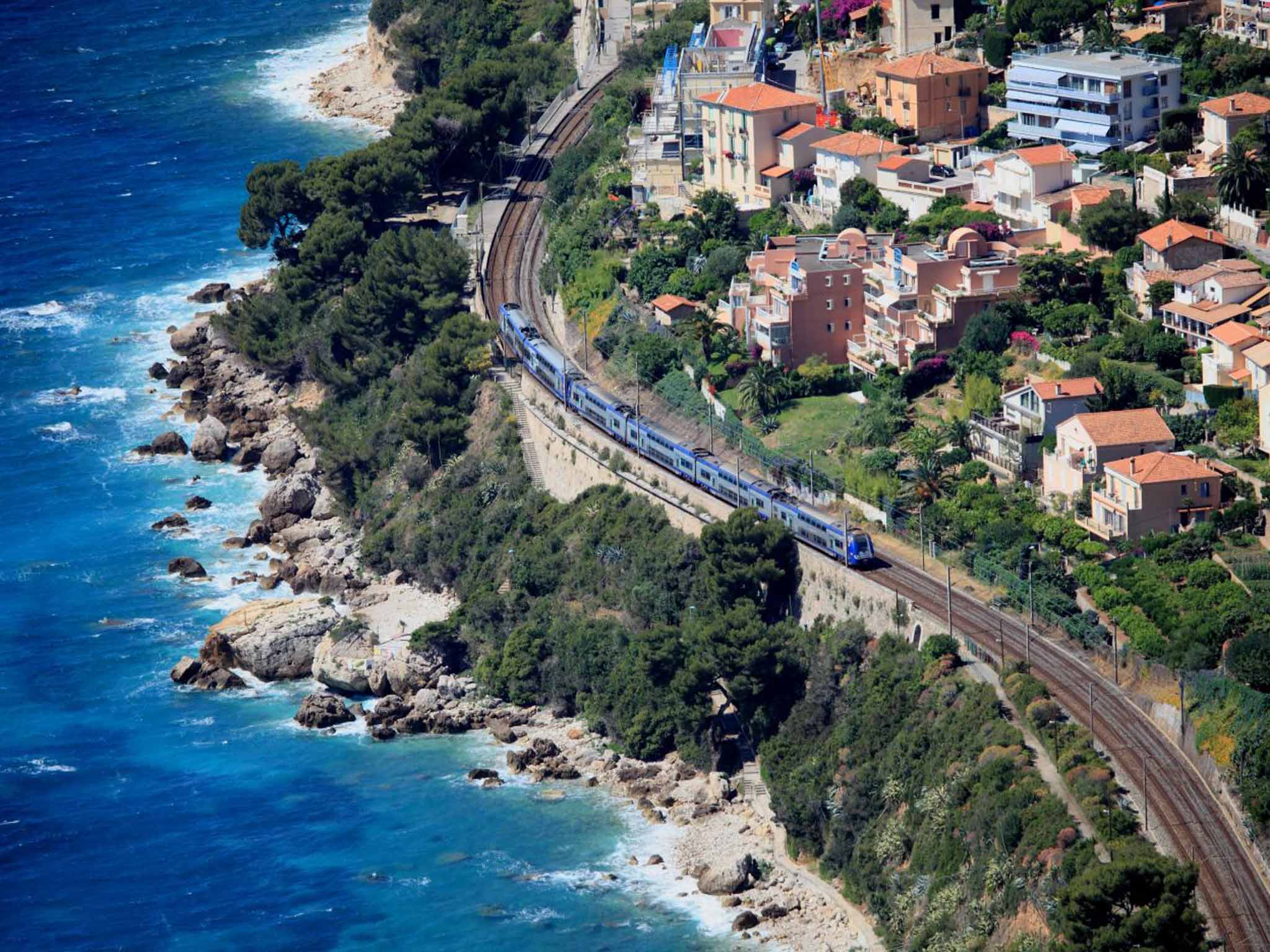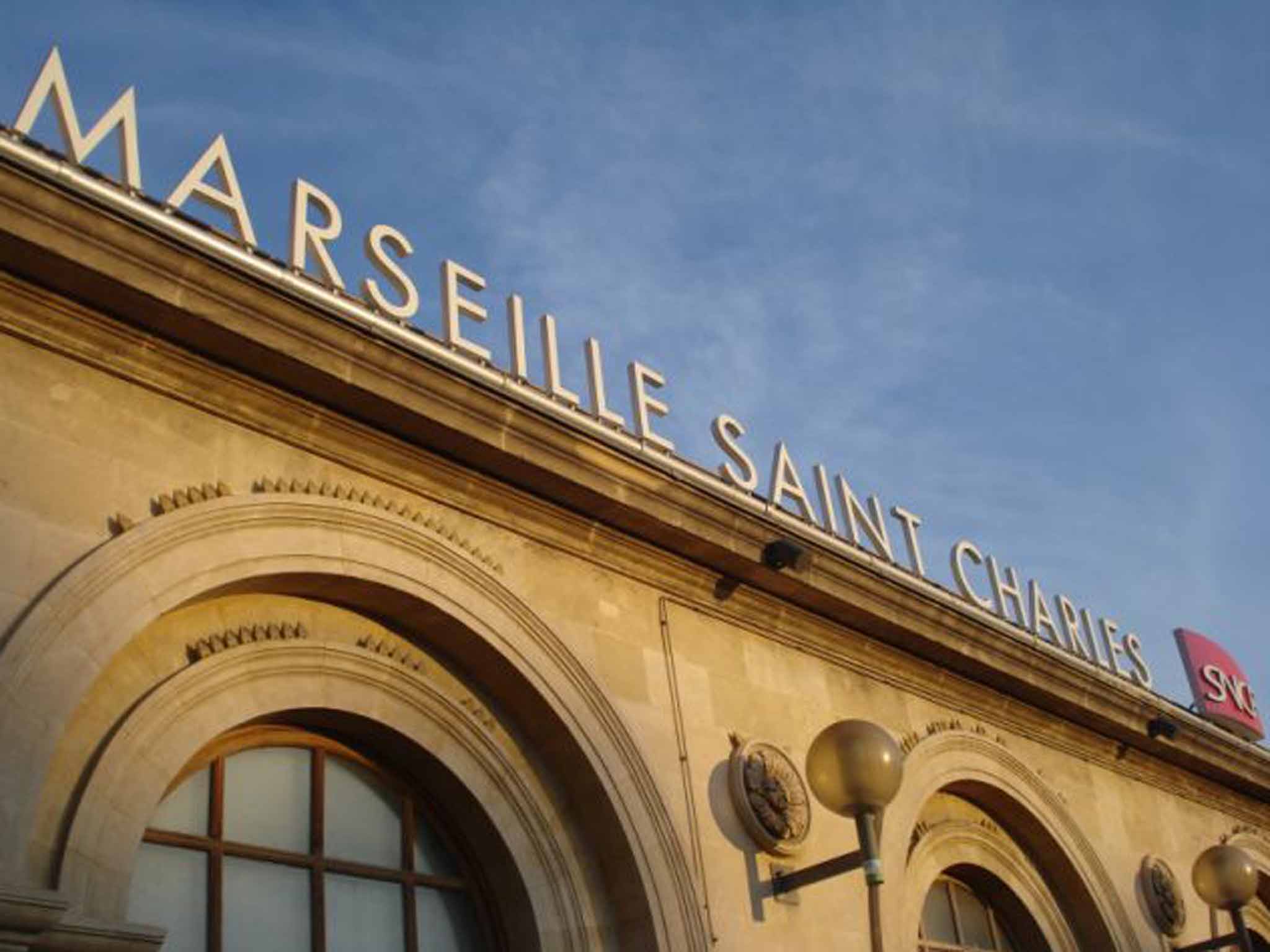France by rail: A new train service connects London to Marseille
Simon Calder looks at exciting new ways to explore this Continental favourite

Your support helps us to tell the story
From reproductive rights to climate change to Big Tech, The Independent is on the ground when the story is developing. Whether it's investigating the financials of Elon Musk's pro-Trump PAC or producing our latest documentary, 'The A Word', which shines a light on the American women fighting for reproductive rights, we know how important it is to parse out the facts from the messaging.
At such a critical moment in US history, we need reporters on the ground. Your donation allows us to keep sending journalists to speak to both sides of the story.
The Independent is trusted by Americans across the entire political spectrum. And unlike many other quality news outlets, we choose not to lock Americans out of our reporting and analysis with paywalls. We believe quality journalism should be available to everyone, paid for by those who can afford it.
Your support makes all the difference.This month, for the first time, the Thames and the Mediterranean are connected by a direct train: Eurostar's new year-round link from London St Pancras to Marseille St-Charles. So, you can breakfast in the capital, then whizz along High Speed One (opened 2007) through Kent to the Channel Tunnel (opened 1994) before slotting into France's ever-expanding high-speed network (opened 1981).
Relax as almost the entire length of France blurs past at 186mph, and cross the "classic" line that once carried the Orient Express east from the Seine to the Bosphorus. Pause only in the fine cities of Lyon and Avignon, and arrive in the deep south within six-and-a-half hours of leaving London. Planes may be marginally quicker, but they will be more stressful. And with fares starting at £49.50, the train is regaining the edge from flying – no air passenger duty payable (Eurostar: 03432 186 186; eurostar.com).
Once in Marseille, you could change to a ferry and continue across Corsica, or take one of the dramatic lines that snake along the coast, clinging to the cliffs east to Nice and Menton, or beside the gentler shores west to the Spanish frontier. Not that there is any need to stop at the border: France has easy links to all its neighbours: Spain, Italy, Belgium, Luxembourg, Germany and Switzerland; Basel station even has a special terminus for French trains. From Basel, you could be back in Paris in three hours aboard a Train à Grande Vitesse, the high-speed backbone of French long-distance travel, or board a "classic" EuroCity train, the Vauban, beside the Rhine through Alsace and Lorraine to the city of Metz.
You can also fly from the UK into France's leading airports and connect straight into the rail network – excellent news for people who do not live near the Eurostar terminals in London or Ashford. Paris Charles de Gaulle, the busiest airport in Continental Europe, has the widest range of links, while Lyon is the alternative plane-to-train gateway, with the airport astride the TGV "bypass" line built between Paris and the south.

Granted, not everything is perfect about rail travel to, from and through France. When you return north from Marseille to London, everyone is herded off the train at Lille to complete security and frontier formalities. SNCF, the nationalised organisation that runs the trains, makes the business of buying tickets and reserving seats – online or at stations – unnecessarily complex. In Britain, you can buy an open ticket easily, but should you decide to travel on a whim from Perpignan to Nimes or Nantes to Paris, you could find all seats taken. And disruption, in my experience, is handled less effectively in France than in Britain.
Yet this is a nation devoted to the railway. Recently a "rail Ryanair" was introduced, in the shape of the Ouigo proposition: high-speed, high-density trains that link cities such as Lyon and Marseille with Marne-la-Vallée, east of Paris, with fares from as little as €10 if you book in advance (ouigo.com).
On other lines, the iDTGV proposition on conventional services allows dramatic savings. Booking just a day ahead for the 360-mile trip between Paris and Bordeaux can yield one-way fares as low as €29 in first class, a quarter of the normal fare. And the trains are impressively swift: on the newest high-speed line, from Paris to Strasbourg, services touch 200mph, covering the 300 miles in 2 hours 17 minutes.
The real joy of French rail travel, though, is to be found away from high-speed lines. Even on the outskirts of Paris, the line curling around from the modestly impressive St-Lazare terminus to Versailles presents a fascinating fresh vision of the capital. In the Ardennes, Normandy or the Massif Central, you can rattle through la France profonde along branch lines linking market towns or soar into the Alps and Pyrenees. Whichever track you take, you will understand why France welcomes more tourists than any other country in the world.
Slope off
If you like to save the best bit of a journey until last, then the seasonal Ski Train run by Eurostar to the heart of the French Alps should enthral you. The first hour is humdrum (with one-third of it spent beneath the Channel). The next three hours are impressively fast, skipping past Paris and across Burgundy. Once you reach the charmingly old-school station at Chambéry, the fun starts: carving through Alpine valleys, the mountains rising ever more ambitiously around you and the station names showing this is prime wintersport territory: Albertville, host city for the 1992 Winter Olympics; Moutiers; Aime-la-Plagne. The controls are set for the heart of Mont Blanc, but the train hits its terminus a little short of Europe's highest peak, at Bourg-St-Maurice – where a funicular whisks you straight to Les Arcs.
Island line
There is much to be said for low-speed trains, as the four-hour journey across the spine of Corsica demonstrates. This five-a-day link (only twice on Sundays) hoists you from Napoleon's home town, Ajaccio, into the mountains, reaching areas excluded to anyone but rail passengers and hikers on the parallel GR20 long-distance trail.
Make time to pause in the ancient city of Corte, ideal for a lunch stop and for stretching your legs. At Ponte Leccia you can switch to the north-west line to L'ile Rousse and Calvi, where package tourism began in 1950, or continue to the charming harbour and enticing restaurants of Bastia.
A €49 ticket will give you the freedom of the island's railway network for a week, which for independent travellers is good news – since Corsica is the worst island for hitchhiking in the entire Mediterranean (cf-corse.fr).
Due south
In the olden days, long-distance railways in France followed the nation's river system. One of the main lines south from Paris shadowed the Seine and the Yonne, then picked up the Saone and the Rhône. But the other traced a strict north-south course, picking up the Loire, its tributary the Allier and the Gardon. The southern part of this line still echoes with daily InterCité services.
From the capital of the Massif Central, Clermont-Ferrand, the train swerves through the Auvergne, heading up ever further alongside the fast, young Allier. Then the descent towards the Mediterranean begins, through the intriguing old town of Ales – where the discordant twin industries are mining and silk. Journey's end is Nimes, where ancient Rome and modern France converge so agreeably.
Open-top ride
The 39-mile journey from the pleasant spa town of Villefranche, in Languedoc-Roussillon to the gritty station at Latour-de-Carol, in the High Pyrenees, comprises the most dramatic feat of engineering on the entire French network. Nineteen tunnels and two bridges – including a spectacular suspension effort – guide the metre-gauge trains into the mountains, reaching a high point almost one mile above the Mediterranean at Bolquère-Eyne.
The line is only half the fun: this is the one service on the entire SNCF network which boasts an open carriage, offering 360-degree views of some of France's finest scenery. When you reach Latour-de-Carol, take note that this is the one station with three different gauges: standard, metre and Iberian – because trains from Barcelona and Toulouse also converge here. To continue: either take the splendid journey down to Toulouse, or take a bus back to Villefranche so you can admire the engineering from a different perspective.
Grands départs
France's stations range from sleepy rural halts to grand termini. In Paris, the Gare de l'Est, where once the Orient Express arrived and departed, is the most impressive, both within its delicate roof and for its monumental façade. But Gare du Nord, used by Eurostar, is no slouch – take time to admire the fine architecture and constant sense of energy.
Take a train north for an hour, if you wish, to admire the prototype – Lille-Flandres, where the original Paris Gare du Nord was shipped and painstakingly rebuilt almost brick-by-brick. In provincial France, my favourite stations on the main lines are Metz (Imperial German architecture at its mightiest) and Limoges, where the breathtaking 1920s design is as lyrical as the station's name: Bénédictins.
Back in Paris, while Montparnasse is a modern monstrosity, Gare de Lyon has embraced the TGV era with flair – and Le Train Bleu brasserie remains the finest station catering spot in Europe. The best Parisian terminus is no longer open to passengers: it is now the Musée d'Orsay (musee-orsay.fr), the modern art museum, with trains consigned to the bleak RER lines beneath the surface.
How to book
You might imagine that buying a train ticket in 21st-century France is easy. But queues can be long, and websites complex. If you prefer the human touch, Voyages-SNCF.com has a walk-in office at 193 Piccadilly in central London.
Commercial ventures are often easier than the official French Railways site, with capitainetrain.com one of the best. UK organisations such as loco2.com are also well connected to booking platforms. For finding times, the German site bahn.de is efficient.
The most useful format for planning is the monthly European Rail Timetable (europeanrailtimetable.eu). You can pre-order the June edition for £15.99.
Once in France, "walk-up" tickets are reasonably priced. Don't forget to compostez votre billet, i.e. stamp it in the yellow platform machine, or you will face an onboard fine.
Print-at-home tickets are the only way to go if you are taking advantage of Ouigo or iDTGV fares.
For anyone planning ahead, these tickets are so cheap that the advantages of booking an unlimited-travel rail pass (bit.ly/FrRailPass) have been eroded: the least expensive adult pass allows three days' travel in a month for £155.
Join our commenting forum
Join thought-provoking conversations, follow other Independent readers and see their replies
Comments